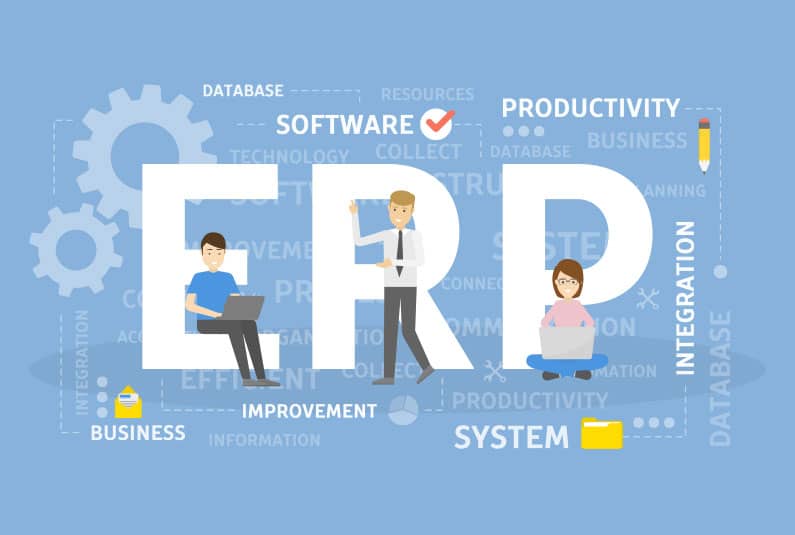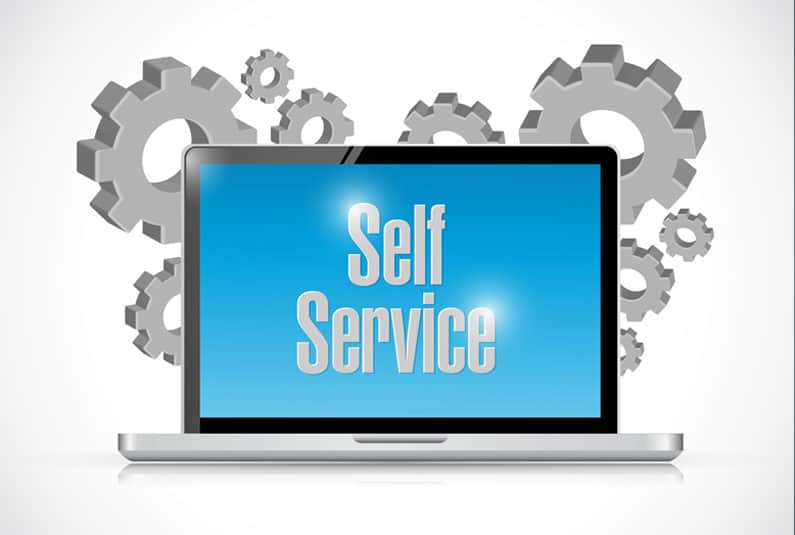We’ve been saying it for years. Now it appears that the industry at large is echoing our sentiments. A business to business (B2B) web store is quite a different animal than a business to consumer (B2C) web store. There have been a number of articles and blog posts recently on this topic.
Over 45% of B2B technology buyers are 25- to 34-year-olds, making them the single largest demographic, followed by 30% in the 35- to 44-year-old age group. (TrustRadius)
The B2B ecommerce market is projected to reach a value of $20.9 trillion by 2027, at a CAGR of 17.5%. (Research and Markets, 2020).That is a staggering number. So your choice is to get on board or be left behind.
What’s Driving It?
In large part, we can thank the good folks at Amazon or the other online marketplaces for creating the demand for B2B ecommerce and, of course, the pandemic of 2020-2021 played a large part in accelerating demand for online buying options. . From that we’ve come to enjoy, and expect, a certain level of convenience, self-service, and access to information in our personal lives that we are now demanding it in our work lives.
We live in a world of instant gratification, like it or not. Our customers are no longer satisfied with “Your business is very important to us. Please wait for the next available agent. Your estimated hold time is xx minutes.” We want what we want (product information, pricing, to place an order, to pay a bill, to check delivery status, etc.) and we want it now. And we don’t want to have to speak with anyone, unless we choose to, and they better know everything about us and our account or order when we do.
That can be a tall order for a lot of businesses. How do you give your customers what they’re demanding so you can keep them as customers and attract new customers? As a start, your systems need to be integrated so your people have a single view of the truth for your customers. Disparate systems make this very difficult.
What is integration?
Indeed. What is integration? Regardless if you’re running a B2C or a B2B site there are many different integrations that will make your customers’ journey more complete so they can make an informed purchase with confidence.
So what are some of these integrations? Below we’ve listed a few. This does not represent an exhaustive list but does cover a lot of the more crucial ones.
Shipping
There’s quite a bit that can be done for shipping integration. This may be as simple as providing a tracking number that links to the carrier’s tracking site so customers can track their own orders. Or it can be as sophisticated as offering different shipping options with pricing based on dimensional weight from various carriers. For B2B buyers you may also want to provide an option for the customer to use their own carrier.
Regardless of how many options you want to provide your customers, the key is to make everything transparent so there are no surprises at check out. Unexpected costs are a big contributor to cart abandonment.
Tax Calculation & Compliance
One of the benefits of selling online is that you can expand your reach well beyond your immediate geography. If you do, you may have to deal with sales tax compliance in those jurisdictions that you sell into.
Since the recent US Supreme Court ruling on South Dakota v. Wayfair, Inc., economic Nexus laws are sweeping across other states and for Canadian companies selling into the US. The burden is on the seller to comply with sales tax reporting and remittance in every jurisdiction. Integration to an online tax compliance service can offload this complex process and ensure compliance.
Payment Card Processing
Selling online usually means you need to accept payment online as well. In a B2B environment customers may be able to purchase on terms. More on that later.
Accepting payment online means accepting major credit cards, PayPal, ACH, Debit, etc. It’s important that your site can manage these transactions and, ideally, have them flow with the order to your fulfilment process.
Having payment integration on your web store is the first level of integration. To complete the cycle it is beneficial to have the integration on the ERP side of the process as well. Since funds should not be captured until goods are shipped, having the payment card integration on the ERP side makes that process easy and automatic.
Social Media

Share. Like. Tweet. Pin. Building a great web store is one thing. Letting people know you exist is quite another. There are a lot of ways to inform your customers and prospective customers about your web store. Social media can be a very effective way to do that considering there are millions of people using it every day.
By integrating to the social media platforms that your customers use you can keep your business top of mind.
Analytics

If you don’t know what’s broke, you can’t fix it. Monitoring what’s happening with your site visitors and where they are coming from gives you actionable data to improve the customer experience.
You can sign up for Google Analytics for free. There are a lot of resources on the Internet that will help you learn how to use the data like this article by Morgan Jones for tracking on-site promotions or many others that you can find with a Google search.
CRM and Marketing Automation

You might think this one’s a bit odd, but from a marketing perspective it does make sense. When you engage in marketing to drive traffic to your web site, the work doesn’t stop there. Not everyone buys, or only buys once. You want to continue to market to them so getting them into a workflow in a CRM or marketing automation system can be very helpful.
Maybe they sign up for your newsletter so you need to get them on that campaign. Wouldn’t it be nice if that was a more automated process?
There can be countless other activities that you use to nurture your visitors until they ultimately become customers. CRM and marketing automation tools are a great way to facilitate that with workflows that make sure nothing gets missed.
ERP/Accounting System

This is a big one, and arguable the most challenging. Until recently, it wasn’t even on the radar. Now it is being seen as one of the more crucial elements to an ecommerce platform. And with good reason. It means that there is one main source of data that all systems use. The web store automatically gets products and pricing from the ERP. The ERP automatically gets orders and payment from the web. No disparate data sources to keep In sync. No problems caused by keying errors or outdated information. No extra work to process web orders. We’ll discuss this in more detail in the next section.
The difference between B2C & B2B

A B2B buyer has a much different persona than a B2C shopper. B2C shoppers are more likely to spend more time browsing, reading product reviews and comparisons, watching videos, etc. The experience you design for them will be much different than one designed for a B2B buyer.
Sure, it’s possible that B2B buyers may want to have access to some of the same capabilities, but more often they want to get down to the task at hand and get back to work. So the experience you design for them will be decidedly different than a B2C shopping experience. You’ll want to provide multiple order methods that make it easy for buyers to buy, and navigation that gets them to the end game as quickly as possible, while still providing for easy access to more information when wanted.
The easy stuff
Every web store, regardless if it’s B2B or B2C, will deal with many of the integrations listed above. Most are relatively straight-forward. If you’re strictly B2C, even integrating to an ERP can be relatively straight-forward. Everyone gets the same price and everybody pays up front. Most web developers will tell you that they can deal with it no problem, they do it all the time. And they’re right…when it’s B2C. A simple import/export or similar utility can deal with that pretty effectively.
But B2B is a different animal, and here’s why.
The hard stuff
Wholesale distributors seldom have one price list for all customers. Pricing is often based on volume, negotiated prices, contract pricing, or many other factors. And it can change frequently.
Wholesale customers will often be granted purchase terms that allow them to purchase by issuing a purchase order and paying later. That means your web store needs to be aware of credit standing and available credit limit.
Wholesale customers often have multiple buyers making purchases on their behalf.
Distributors often sell different products to different customers so they have to limit what a particular customer may see and buy on their web store.
A special promotion may be offered to some customers but not others.
Managing these kinds of idiosyncrasies of a B2B web store is no small challenge. And well-intentioned web developers may believe that they can do it. It’s not until you’re thousands of dollars deep into development that you and they discover that it’s not that easy. Or that they just can’t do it.
Why it’s important
It’s all about the customer experience. If visitors to your site experience any difficulty, you’ll lose them. And lose them quickly. You need to get it right or it may be a long time before you get a second chance to regain that opportunity.

For your customers
Your B2B buyers want to be confident that when they log into your store they will get their price for the products they are eligible buy, and do so on their purchase terms, quickly and easily. They want to know that their order will be fulfilled correctly, the first time.
When your web store is deeply integrated to your ERP, it knows everything about that customer and presents a personalized buying experience with their products, pricing, and terms. No surprises. No mistakes.
Make it easy and error free and you are more likely to keep them as a loyal customer.
For you
There’s a ton of benefit for you, as the merchant, with a web store that is deeply integrated to your ERP.
No-rekeying of data into either system
This in and of itself adds huge value.
- No keying errors
- No labor required to keep both systems in sync
- Prices on the web are always consistent with prices in your ERP
- Web orders are correct because your customer placed it and they are automatically available in your ERP for fulfilment
One source of data
All product, price, and customer updates are maintained in your ERP and automatically available to your web store. No duplication of effort and one system of record.
Sales analysis, reporting, and business intelligence is managed through the tools you already use for your ERP reporting.
Give them what they want
Your customers want to self-serve. It’s not an option any more. When your web store is deeply integrated to your ERP, they can.
“If you build it, they will come”. Remember that iconic line from Field of Dreams. No disrespect to W. P. Kinsella but he was clearly not talking about a web store. When you’re speaking about a new web store, or any web site for that matter, a better phrase would be, “If you market it, they will come.”
Having a great web store that’s easy to navigate, displays your products compellingly, adapts properly to mobile devices, and has a clean checkout process with no surprises (read “hidden costs”) is critically important. In fact, those are table stakes. If you don’t have at least that, you’re not even in the game. But just building it does not mean customers will find it. You need to drive traffic to your fabulous new site.
So how do you drive traffic to a new web store?
Like any marketing activity it’s a combination of art and science. Thankfully, measuring marketing activity effectiveness on the web is far more science than traditional marketing mediums. With tools like Google Analytics and other services you can get some very good data about what works and what doesn’t, and much quicker than traditional marketing.
Let’s take a look at some of the tools at your disposal.
Drive Traffic
Tell Your Current Customers
If you’ve been in business a while you likely have a list of repeat customers. Tell them about your new web store. Encourage them to use it. Provide an incentive for them to use it. Have your staff give them a guided tour to encourage adoption. Seems obvious but it’s surprising how many people miss this simple step.
Presumably one reason you built the web store was to reduce your administrative overhead to process orders. If you can drive much of your current business to the site you will accomplish that. Get the easy stuff right and the rest will follow, with some effort.
Search Engine Optimization (SEO)
SEO can be a bit tricky. There are consultants and firms out there that do nothing but SEO for their customers. If you have the inclination, you can learn the basics and do your own successfully. One challenge is that the rules seem to change on a fairly frequent basis. If you’re going to do it yourself you’ll want to focus on what Google looks for on a web site to allow it to rank organically (not a paid listing).

Having access to the data in your ERP lets you provide a customer portal where customers can manage their orders and payments, track shipments, review and reprint invoices or other documents, re-order from prior invoices, and any number of other self-serve functions. That takes the burden off of your staff and gives your customers what they want. Everybody wins.
You can now have your staff do more meaningful work like servicing customers rather than the mind-numbing, tedious work of trying to keep 2 disparate data sources in sync and responding to low value customer requests like resending an invoice because the customer misplaced theirs.
Who can help?
If you’re strictly B2C, then most web developers can provide some rudimentary integration or import/export routine that will be adequate. But when you add B2B to the mix, that’s when things get complicated.
You can take this with a grain of salt because this is the business that we’re in. North49 publishes an integrated ecommerce platform for Sage 300 called Webtelligence. We have been digging around those data structures for 30 plus years and know them inside out; arguable as good as or better than anyone on the planet. Webtelligence is purpose built for Sage 300.
Regardless of the ERP you use, look for a provider with that kind of knowledge and experience. The better they understand your ERP, the better your integration will be, and the better your customers’ and your experience will be.
Many web developers will tell you that they can handle it. I don’t believe that they’re intentionally misleading you. They just don’t know what they don’t know. Until you’ve been down that road, you don’t know what you’re in for.
Conclusion
The best advice I can give is do your homework. It’s worth the effort.

B2B ecommerce is more complicated than B2C. It takes specialized knowledge about ERP on the part of your web developer to get it right.
That doesn’t mean it has to be more expensive. You may be surprised to learn that it costs no more to develop a properly integrated site than it does to build a non-integrated site. The process and the players may be different, but the result will be a superior experience for your customers and for you.
To discuss your situation and requirements, find some time on my calendar for a discussion.
